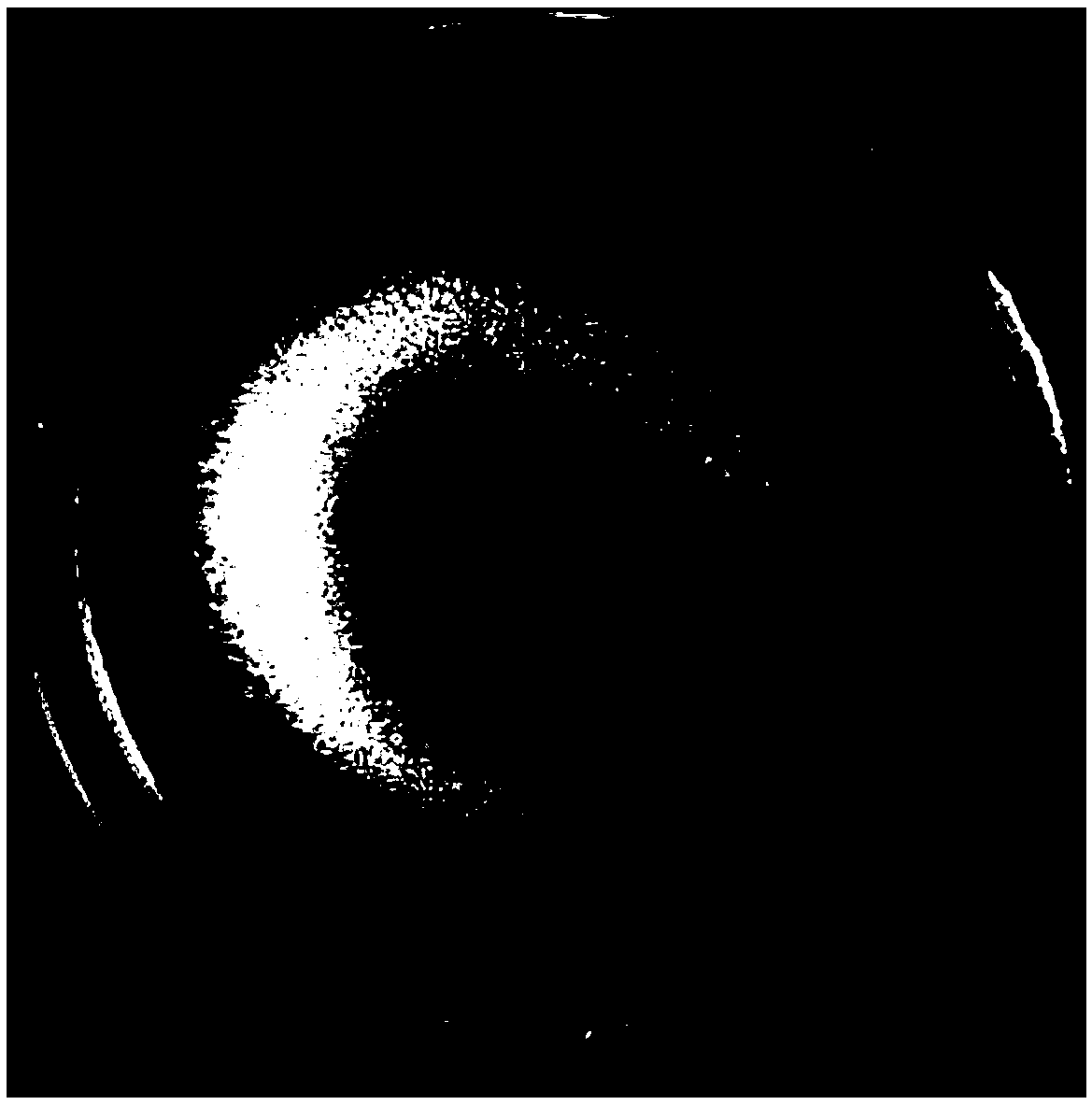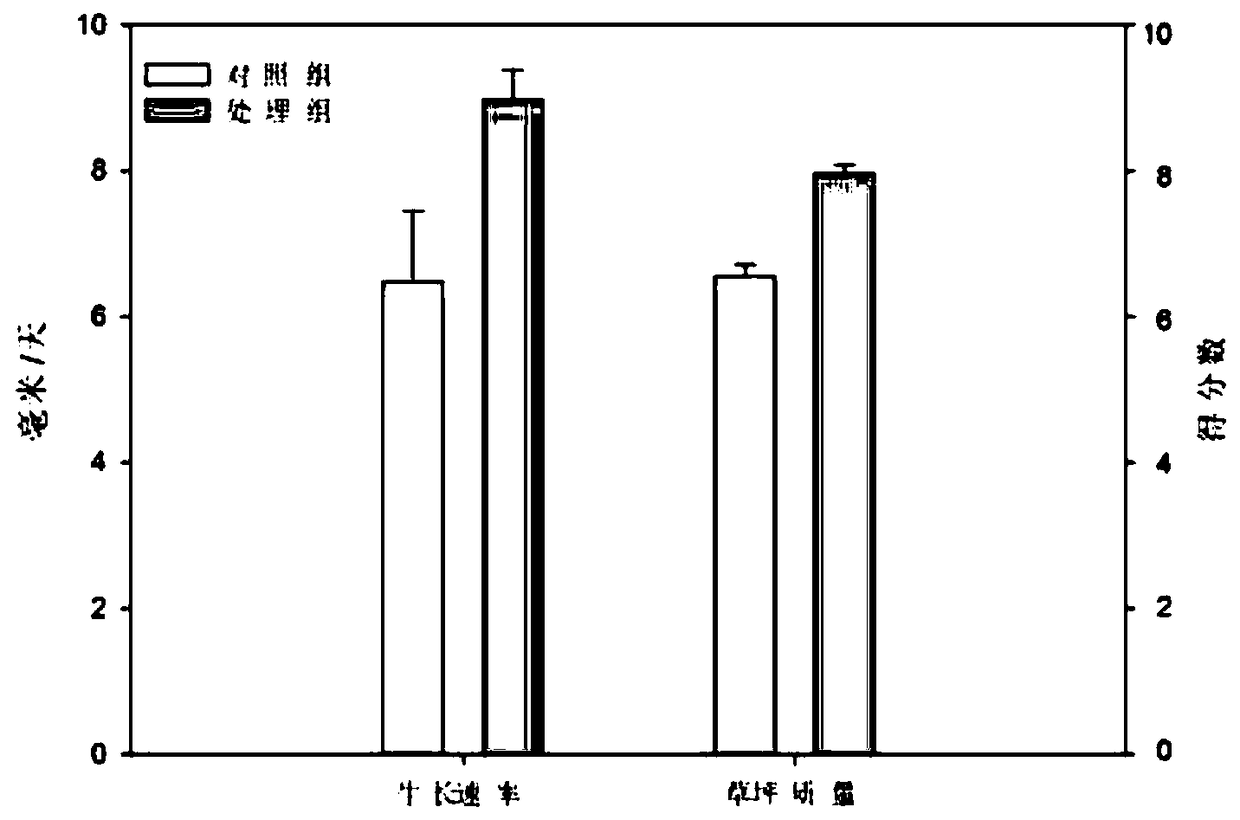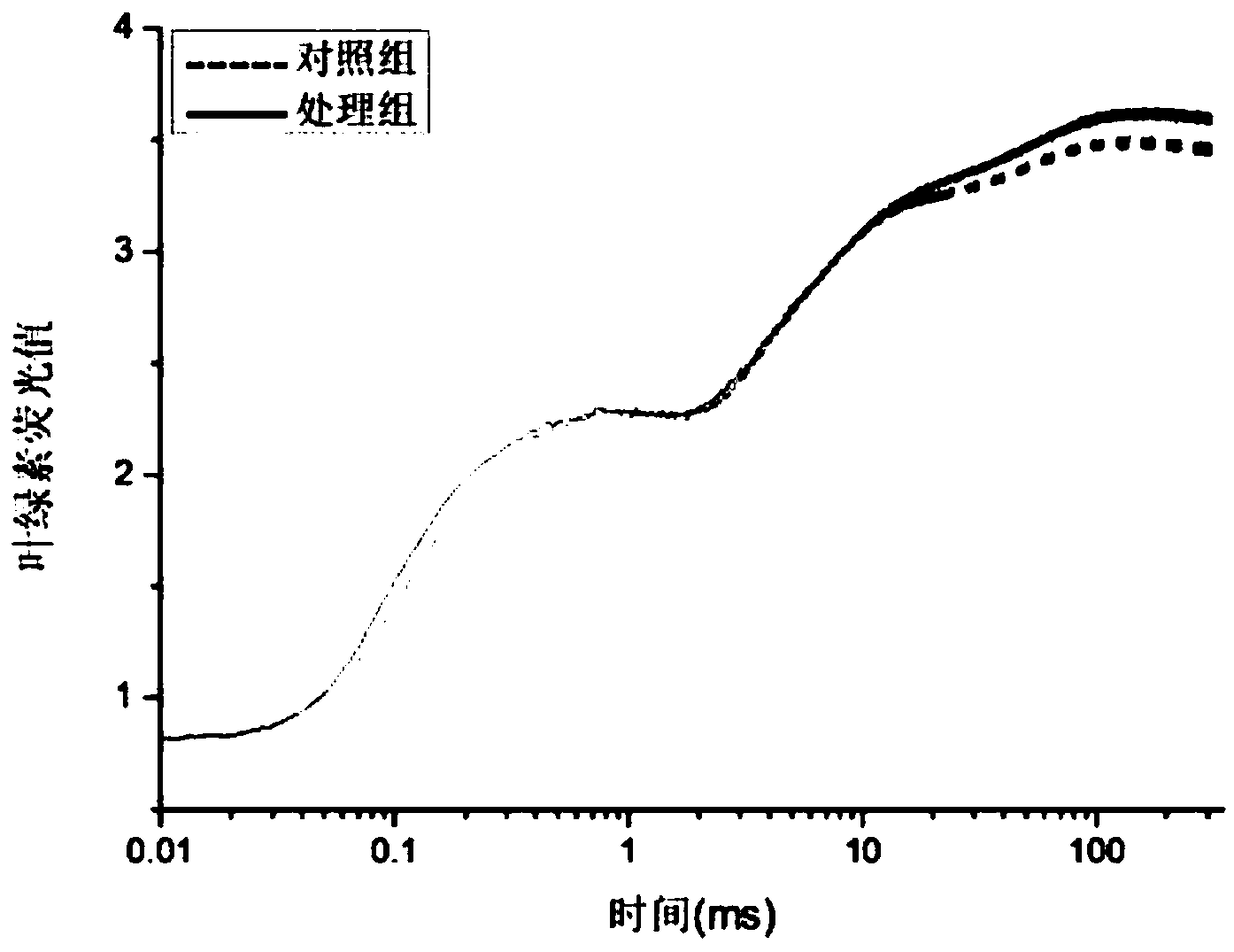Preparation method and application of potassium-dissolving microbial agent
The technology of a microbial inoculum and potassium-solubilizing bacteria can be applied in the field of microorganisms, which can solve the problems of unfavorable agricultural sustainable development, easy damage to soil structure, and decrease of organic matter content, and achieves the effects of promoting the growth of ryegrass, low cost and increasing content.
- Summary
- Abstract
- Description
- Claims
- Application Information
AI Technical Summary
Problems solved by technology
Method used
Image
Examples
Embodiment 1
[0029] 1. Embodiment 1: the potassium decomposing ability of the potassium decomposing microbial bacterial agent
[0030] Using spot seeding method, Aspergillus aculeatus was inoculated into solid medium containing 1% insoluble potassium (potassium feldspar powder), and cultured upside down at 30°C for 7 days to observe the change of colonies in the medium. The result is as figure 1 As shown, a white potassium-dissolving circle appeared around the colony, indicating that Aspergillus aculeatus fungus has a potassium-dissolving effect on insoluble potassium.
[0031] Put the Aspergillus aculeatus solution (the number of bacteria in the solution is in the range of 1×109~9×109 CFU / mL) into the liquid medium containing potassium feldspar powder at an inoculum of 3%, culture it in a triangular flask, and use flame photometry The concentration of soluble potassium in the fermentation broth was determined by meter method.
Embodiment 2
[0032] Embodiment 2: the ability of organic acid secreted by potassium decomposing microbial bacterial agent
[0033] The principle of dissolving potassium by potassium-dissolving bacteria is to secrete organic acids, lower the pH value of the rhizosphere environment, and thus dissolve insoluble potassium in the soil into soluble potassium for direct absorption and utilization by plants. The types and concentrations of organic acids in the fermentation broth were determined by high performance liquid chromatography using potassium feldspar powder liquid medium.
Embodiment 3
[0034] Embodiment 3: the preparation of potassium decomposing microbial bacterial agent and be used for ryegrass pot experiment
[0035] Put the bacterial liquid of the potassium-solubilizing bacterium Aspergillus aculeatus (the number of bacteria in the bacterial liquid is in the range of 1×109~9×109 CFU / mL) into 100mL Martin’s (Martin) liquid medium at an inoculum of 3%, at 30°C , 170 r / min shaking culture for 48 hours, that is, the liquid potassium decomposing bacteria solution was obtained. Add 20mL of the above liquid potassium-dissolving bacteria solution into a solid medium (v / v=2:1) mixed with 100g of sand and peat, adjust the pH to 6, and incubate at 30°C for 3 days to make a solid potassium-dissolving microbial agent.
[0036] The ryegrass pot experiment set up a treatment group and a control group. The treatment group was treated with 5g / pot of the above-mentioned solid microbial agent (500g of potassium-deficient and insoluble potassium soil in each pot), and the...
PUM
 Login to View More
Login to View More Abstract
Description
Claims
Application Information
 Login to View More
Login to View More - R&D
- Intellectual Property
- Life Sciences
- Materials
- Tech Scout
- Unparalleled Data Quality
- Higher Quality Content
- 60% Fewer Hallucinations
Browse by: Latest US Patents, China's latest patents, Technical Efficacy Thesaurus, Application Domain, Technology Topic, Popular Technical Reports.
© 2025 PatSnap. All rights reserved.Legal|Privacy policy|Modern Slavery Act Transparency Statement|Sitemap|About US| Contact US: help@patsnap.com



